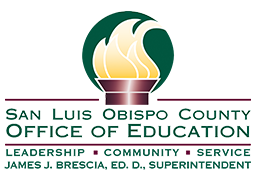On Feedback
We are surrounded by feedback every day. Most of it is informal (a pat on the back) and some of it is quite formal (mid- or end-of-year evaluations). Unfortunately, much of this feedback does not result in positive changes because of the difficulties in receiving and processing feedback.
Most of us have had the experience of giving feedback that was not well-received. In our positions, we often don’t have a choice about whether or not to engage in the process of giving feedback. Increased understanding of the dynamics of receiving feedback may improve the effectiveness of that communication.
The dilemma for anyone receiving feedback lies in the human drive to continually learn and at the same time be accepted and respected. Feedback, even negative feedback, can contribute to positive changes. As feedback is delivered, whether formally or informally, Douglas Stone has identified three triggers that block the receiver from productively using feedback:
- Truth Triggers are engaged when the receiver perceives the feedback as flatly untrue (you say that I don’t check for understanding among all students, but you only observed my class for a half an hour!)
-
Relationship Triggers are set off when the receiver does not consider the person delivering the feedback as credible.
- Identity Triggers come into play when the receiver’s self-image is shaken. For example, when it is pointed out to a principal that the students in the school do not feel that the principal cares about them.
Of course, any of these triggers can be well-founded. As we both deliver and receive feedback, being aware of these triggers can help us navigate the effectiveness of our efforts.
In order to maximize the effectiveness of the feedback we either give or receive, it may be helpful to consider these questions:
- Is the feedback true? What evidence do I have that supports that answer?
-
How might my relationship with the giver or receiver of the feedback be clouding the way it is received?
-
When delivering feedback that might challenge the receiver’s self-image, how might I plan to introduce the feedback in a way that acknowledges the receiver’s value in other areas?
Effective feedback is a critical component in moving systems forward and improving student learning. For more information about giving and receiving feedback, check out Thanks for the Feedback: The Science and Art of Receiving Feedback by Douglas Stone.
Anne Stone, Ed.D.
Program Director, Induction
Educational Support Services Department
San Luis Obispo County Office of Education
astone@slocoe.org
805-782-7296
Contact
- San Luis Obispo County Office of Education
- Office of James J. Brescia, Ed.D.
- 3350 Education Drive
- San Luis Obispo, CA 93405
- Tel: 805-543-7732
- Contact SLOCOE
- Contact Webmaster

